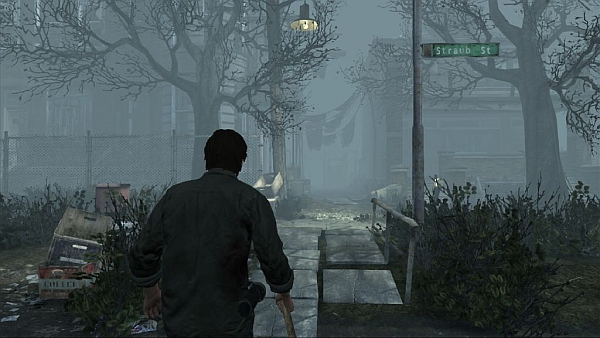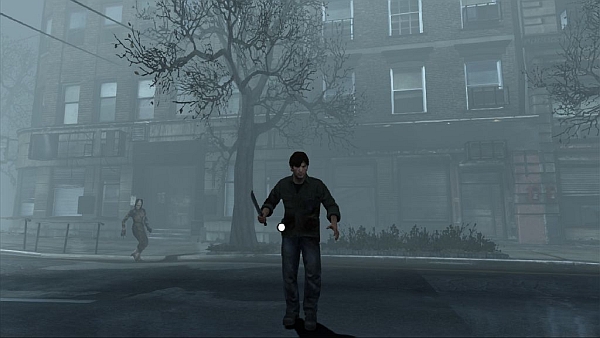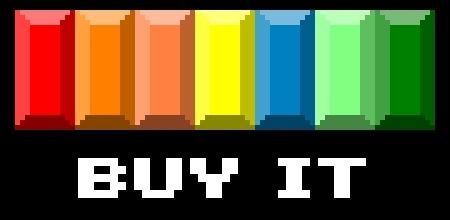
It probably goes without saying that Silent Hill 2 is the yardstick for all of the games in the series that have come after. But it’s important to establish that high water mark before attempting to understand Silent Hill: Downpour, a game designed with more than an an eye toward that early achievement in the series.
Platforms: PS3 (Version Played), Xbox 360
Publisher: Konami
Developer: Vatra Games
Genre: Guilt Simulator
Release Date: March 13, 2012
ESRB Rating: Mature
Silent Hill: Downpour, by Vatra Games, accomplishes the tasks that previous SH installments have failed at: presenting a story of guilt, a creepy town, and interesting puzzles, all while using every tool in the Silent Hill toolbox. Back are the twisted environs, out of joint characters, and the radio that spits static whenever twisted enemies come near. However, it also brings back one of the most important elements of the franchise: the ability to turn down the combat difficulty. This is important, as it should be clear that Silent Hill is not a combat series. If the last several games are any indication, developers think it is, but they are wrong. Being able to turn this difficulty down, while keeping the puzzle difficulty up, allows the game to feel more like SH2 than any game since.
Downpour focuses on Murphy Pendleton, a convict who is able to make his escape into Silent Hill after a The Fugitive-style prison bus crash. The player directs Pendleton in the outskirts of the town, and then through it, on a quest to uncover the nature of his guilt, and his relationship to the disjointed world around him. The story, which is arguably the second most important feature of any Silent Hill game, is surprisingly good. Unlike previous games, the player has agency over the questions of the characters’ guilt. And six different endings of the game play out the ways in which the main characters relate to each other. Well, that is, except for the “surprise” ending which brings back some happily absent SH friends.
The most important feature of a Silent Hill game is the town, and unfortunately, the game takes its time getting to the southeast corner of the eponymous hamlet. But once the player reaches the streets, which are subject to intermittent cloudbursts, all becomes very, very wrong with the world, which is to say that they got the tone of the town exactly right. The addition of sidequests adds great backstory to Silent Hill, giving it a real “died in” feeling. There’s quite a bit to do, and I didn’t get to see all of it. But where I did delve into the stories of this section of town, I was deeply gratified as the intriguing history hinted at in SH2 continued to peek through in engaging glimpses.

As well, this version of Silent Hill does something that Homecoming attempted, but really hasn’t been accomplished for a decade. Enemies and environments generally express the nature of the story and the guilt that is being handled by the mysterious town. Gone are the nurses that James Sunderland lusted after, which appeared for no good reason in later games and in the visually stunning movie. Gone is Pyramid Head, also a particular phantom of Mr. Sunderland’s guilt. In their place are enemies, themes, and locations that weave into the story of Murphy Pendleton.
Having played the PS3 version, I encountered numerous technical hiccups. Framerate was a major problem, as well as the incredibly long load times. Here is where playing on an easy combat level compensated, as I rarely died in the game. But when I did, the length of load times was enough to mark the end of a play session.
Beyond its technical problems, the biggest problem of Downpour is the “void” that pursues the main character, causing you to flee from it several times throughout the game. The void is… well… it’s a void of darkness distorting light around itself; it simply floats through the world causing damage whenever it gets too close in the maze of hallways that it chases you through. It is frustrating, monotonous, and utterly unsuccessful at doing anything except making the player hate their experience.

Downpour ended up lasting a bit longer than I had anticipated, taking about twelve hours to complete. This would have been perfectly fine, except that the tail end of the game seemed a bit overlong, and the time in the town too short. Perhaps the biggest downfall of Silent Hill: Downpour is that not enough time is spent in Silent Hill itself. A long lead up and a long conclusion keep the player out of the town for nearly five hours.
These problems aside, Silent Hill: Downpour was the best Silent Hill experience I’ve had since I played SH2 on my original Xbox a decade ago. It is not quite as overwhelming as that high water mark, but Downpour certainly raises the water level higher than any previous sequel.

Review Disclosure: A review copy of Silent Hill: Downpour was provided by Konami for the purposes of this review.






